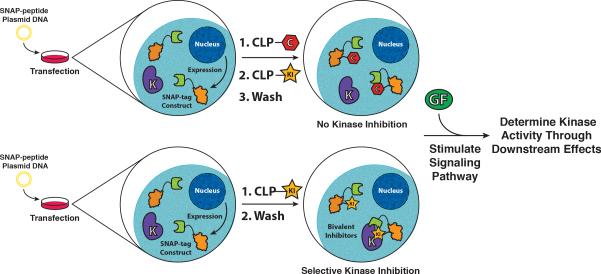Figure 5.
Schematic representation of the strategy for intra-cellular assembly and use of SNAP-tag-based bivalent inhibitors. Mammalian cells express a genetically encoded SNAP-tag fusion protein. A CLP-derivatized ATP-competitive kinase inhibitor (CLP-KI) passively diffuses into cells and labels the monovalent SNAP-tag fusion. Excess monovalent CLP-KI is removed through several wash steps. Upon stimulation of the signaling pathway, kinase activity can be determined by monitoring downstream effects. As a control, a CLP-derivatized small molecule lacking inhibitory activity is used to label (block) the SNAP-tag active site before addition of CLP-KI. Any effects observed are due to CLP-KI and not the SNAP-tag-based bivalent inhibitor.

